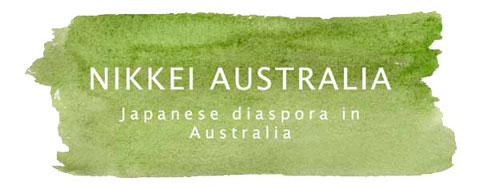「オーストラリアの日本人」は、日豪友好記念事業(1996-1998年)の一環として、各州の日本クラブの連合組織「全豪日本クラブ」により、編集・発行された日豪友好の記念誌です。本誌には、明治時代から続くオーストラリアにおける日本人移住者の足跡が、移住者本人の体験談を中心に、多くの日本人の方々の貴重な写真や資料と共に編纂されています。一世紀をこえる日本人の歴史が、それも一般庶民の通史ともいうべき具体的なエピソードが網羅された記録集であり、また貴重な資料でもあります。
Japanese in Australia – Japanese footprints over a century was published by the Japan Club of Australia to celebrate the century long friendship between Australia and Japan. This volume contains the footsteps of the Japanese settlers who began to arrive during the Meiji Period, featuring the experiences of Japanese settlers with valuable photos and other materials. It includes important stories from everyday people, encapsulating over one hundred years of Japanese history.

DOWNLOAD ALL 「オーストラリアの日本人」
(Japanese in Australia – Japanese footprints over a century)
全編 (PDF 100MB)
発行:全豪日本クラブ
編集:麻生祐介、佐藤寿治、保坂佳秀、水越有史郎
制作:もしもしページ
Publisher: Japan Club of Australia,
Managing Editors: Yusuke Aso, Hisaharu Sato, Yoshihide Hosaka and Yushiro Mizukoshi
Production: Moshi-Moshi Pages Australia Pty Ltd
表紙写真
Cover Photo
ケアンズ近郊、ハンブルドン砂糖黍農場にやってきた日本人契約移民たち(1896年頃)
Japanese canecutters at Hambledon Sugar Plantation near Cairns, North Queensland, about 1896.
(Photo: David C. S. Sissons)
シドニー日本語日曜学校の子供たち
Children in Japanese Sunday School
(Photo: Mayu Kanamori)

DOWNLOAD 00_Cover(PDF 1.35MB)
刊行の辞
Acknowledgements

DOWNLOAD 01_Acknowledgements(PDF 906KB)
発刊に寄せて
Foreword

DOWNLOAD 02_Foreword (PDF 2.58MB)
目次
Contents

DOWNLOAD 03-Contents(PDF 1.07MB)
序・日本人移住史
Introduction
オーストラリアにおける日本人の移住史は、明治時代の真珠貝採取ダイバーや砂糖黍農場の労働者からはじまり、羊毛貿易や米作り、日英同盟に基づく豪海軍への協力など友好関係が続きますが、第二次世界大戦により一変し、日本人は強制収容されます。戦後の反日感情の高まりの中、いわゆる“戦争花嫁”の人たちを通じて日本人に対する理解も深まり、高度経済成長を背景に貿易関係の発展や条約の締結、ワーキングホリデー制度の開始などで、日豪関係はかつてない発展を遂げていきます。
The history of Japanese immigration in Australia began with pearl shell divers and sugar cane workers in the Meiji period, and developed into a positive relationship through the wool trade, rice production, and cooperation between the Australian and Japanese naval forces through the Anglo-Japanese Alliance Treaty. This all changed with World War II, during which time Japanese settlers were placed in internment camps. After the war, at the height of anti-Japanese sentiment, so-called “Japanese War Brides” helped increase broader understanding of Japanese people, and since then Japan-Australia relations have continued to advance, including through the development of trade relations under the backdrop of the Japanese post-war economic miracle, and the commencement of the working holiday programme.

DOWNLOAD 04_Introduction (PDF 1.47MB)
第1章 明治期から大戦前期
Chapter 1: Meiji Period to Early World War II
この章では、真珠貝採取ダイバーの体験談をはじめ、日豪貿易のパイオニア・兼松房次郎、豪州米のパイオニア・高須賀譲、第一次世界大戦で豪海軍を護衛した日本艦隊艦長・宮治民三郎など、明治期から第二次世界大戦前までの期間を描いています。
This Chapter details immigration from Japan to Australia beginning in the Meiji Period up to the start of the Second World War. It discusses the experiences of pearl shell divers, and early pioneers in Japan-Australia relations including trader Fusajiro Kanematsu, rice cultivator Jo Takasuka, and Japanese Naval Captain Tamisaburo Miyaji, who defended the Australian navy in World War One.

DOWNLOAD 05-Chapter_1 (PDF 22.9MB)
第2章 戦時下、収容所時代
Chapter 2: Wartime and Internment
日本が米国、英国に対して戦争をはじめた結果、オーストラリアに暮らす日本人は強制収容の対象となり、その後日本に強制送還されます。第2章では、収容所生活を体験された方々に、当時の様子や戦後の日豪関係について、また、日系二世として生まれた方の思い出、日豪和解の象徴として知られるカウラの捕虜収容所についてなど、日豪の暗い時代を描いています。
As a direct result of Japan entering into war with the United States and the Great Britain, Japanese people living in Australia were placed in internment camps and later forcibly returned to Japan. Chapter 2 explores this dark period of Japanese-Australian history, discussing the experiences of those living in internment, relations during and after the war, the memories of second-generation Japanese immigrants (Nisei), and the Cowra POW camp, which has come to be known as a symbol of reconciliation between Japan and Australia.

DOWNLOAD 06-Chapter_2 (PDF 13.6MB)
第3章 国交回復・経済交流の時代
Chapter 3: Restoration of Diplomatic Relations and Economic Exchange
戦後間もなくは反日感情が高まり、日本人にとって厳しい日々が続きます。日本駐留軍兵士と結婚されて移住してきたいわゆる“戦争花嫁”の人たちの声や、国交が回復して羊毛貿易に携わった商社マン、強制送還されても戦後再び来豪してきた方、大学や研究所で活躍された方、ABCのラジオ・オーストラリア日本語放送局の方など、本章では、戦争によって途切れた交流が、次第に復活し、そして発展していく様子が描かれています。
After the war anti-Japanese sentiment remained high, and Japanese continued to face hardships. Life was particularly difficult for the “War Brides”, Japanese women who immigrated to Australia after marrying allied soldiers stationed in Japan. The restoration of diplomatic relations also saw the arrival of trading company staff involved in the wool trade, the return of those who had been forcibly deported after the war, university academics and researchers, ABC radio Japanese language broadcasters, and others. In this Chapter, the breakdown of relations as a result of the war, the gradual revival of these relations, and their subsequent development are discussed.

DOWNLOAD 07-Chapter_3 (PDF 13.3MB)
第4章 技術・文化移住の時代
Chapter 4: The Age of Skilled and Cultural Migration
1970年代に入り、日豪関係も経済関係のみならず文化面でも大きく発展していきます。この頃から企業駐在員だけではなく、様々な方が移住してくるようになります。空手、陶芸、盆栽、日舞などの一芸に秀でた方や、技術者などが移住するようになり、80年代以降は日本人観光客も増え、日本レストランやお土産店、日本食料品店など、日系コミュニティの発展が見られます。それを背景に日本語メディアも各地で誕生していきます。
Beginning in the 1970’s, Japan-Australia relations began to develop not only economically, but culturally as well. From this period onwards, Japanese immigration expanded from businessmen to include a wide range of people. Specialists in traditional arts such as Karate, pottery, Bonsai and Nichibu traditional Japanese dance as well as other technical experts began arriving in Australia, and from the 1980’s onwards Japanese tourists also increased in number, leading to Japanese restaurants, souvenir shops, and grocery stores, and the development of the Japanese-Australian (Nikkei) community.

DOWNLOAD 08-Chapter_4 (PDF 19.1MB)
第5章 全豪日本クラブとその他日系団体
Chapter 5: The Japan Club of Australia and other Japanese organizations
>1980年代、日本からの移住者が増えだした頃、JICA 国際協力事業団(当時)が海外在留邦人の支援ということで移住者に対する様々な情報提供を行っていたが、そこで知り合った日本人移住者が集まり各地に日本クラブが設立されます。本章ではシドニー、メルボルン、ブリスベン、パースの各日本クラブの誕生とその活動、その連合組織として1991年に結成された全豪日本クラブの活動、および、その他の日系団体が紹介されています。
In the 1980’s, when immigration from Japan was increasing, the Japan International Cooperation Agency (JICA) acted as an information provider to help support Japanese people living overseas. It was through this support from JICA that Japanese immigrants connected with one another and established Japan clubs. This chapter will discuss the origins and activities of clubs in Sydney, Melbourne, Brisbane, and Perth, as well as the organisation of these groups into the Australia-wide Japan club in 1991, and will introduce other Japan-related organisations.

DOWNLOAD 09-Chapter_5 (PDF 11.9MB)
年表・日本人交流史
History of Japan-Australia relations
慶応3年(1867年)の日本人曲芸団の来豪公演からはじまり、平成9年(1997年)の橋本首相(当時)の来豪までの130年にわたる日豪交流史を年表形式でまとめています。序章の「日本人移住史関係地図」とともにご覧ください。なお、年表作成に参照した書籍一覧も含めています。
This chapter draws together a timeline of the 130 year history of Japan Australia relations, beginning in 1867 with the arrival and performances by a Japanese circus troupe, all the way up to then the Japanese Prime Minister Hashimoto’s visit to Australia in 1997. Please view this together with the Japanese immigration history map in the introduction. A list of related books listed in chronological order for reference is also included here.

DOWNLOAD 10-Chapter_chronology (PDF 3.27MB)
日本クラブ他関係機関一覧
List of Japan clubs and related organizations
各日本クラブをはじめ、本誌編集当時の日本政府関係機関とその他日系団体の連絡先一覧表です。
A list of Japan clubs, Japanese government organisations, related Nikkei organisations, and their contact details. Correct at time of publication.

DOWNLOAD 11-List of related organizations (PDF 1.64MB)
協賛企業・団体・個人名一覧
List of sponsors, organizations and individuals
本誌発行に際しては、日豪友好記念事業として日本政府より事業予算の半額を、残りを国際協力事業団(JICA)および日系企業と個人からの寄付による協賛をいただきました。これは本誌発刊事業に賛同された企業・個人の一覧です。
Half of the funding for this publication was provided the Japanese government as a Japan-Australia friendship project, with the remaining funding coming from JICA, Japanese businesses, and individuals. This is a list of organisations and individuals who endorsed this publication.

DOWNLOAD 12-List of sponsors (PDF 1.71MB)
編集後記と奥付
Editorial postscript and imprint

DOWNLOAD 13-Editor’s note (PDF 729KB)






Recent Comments